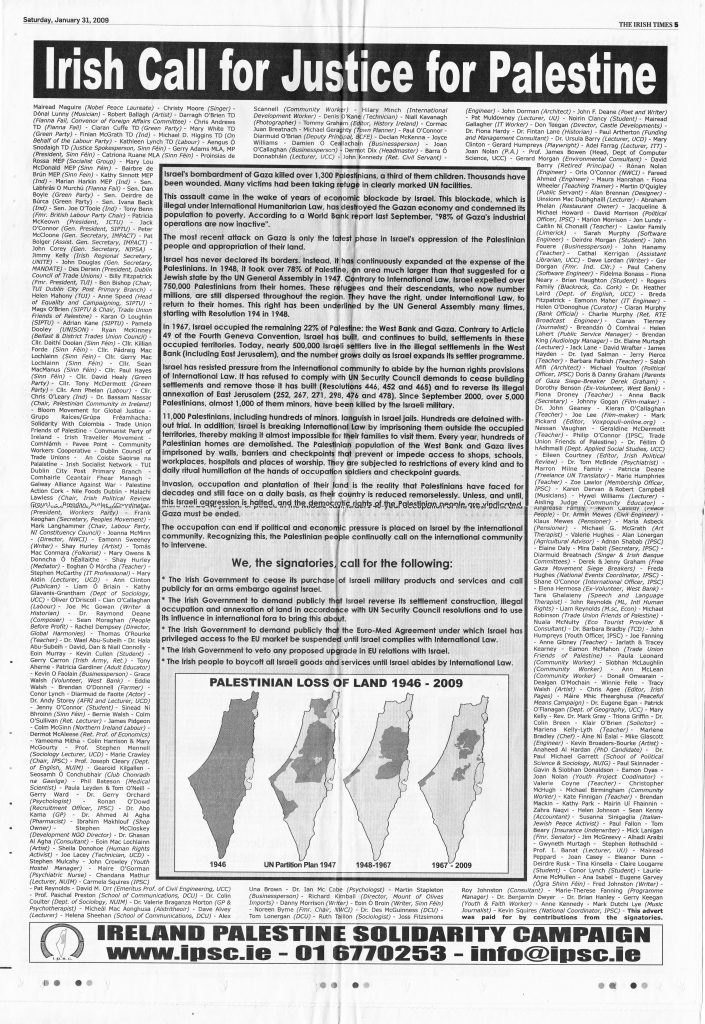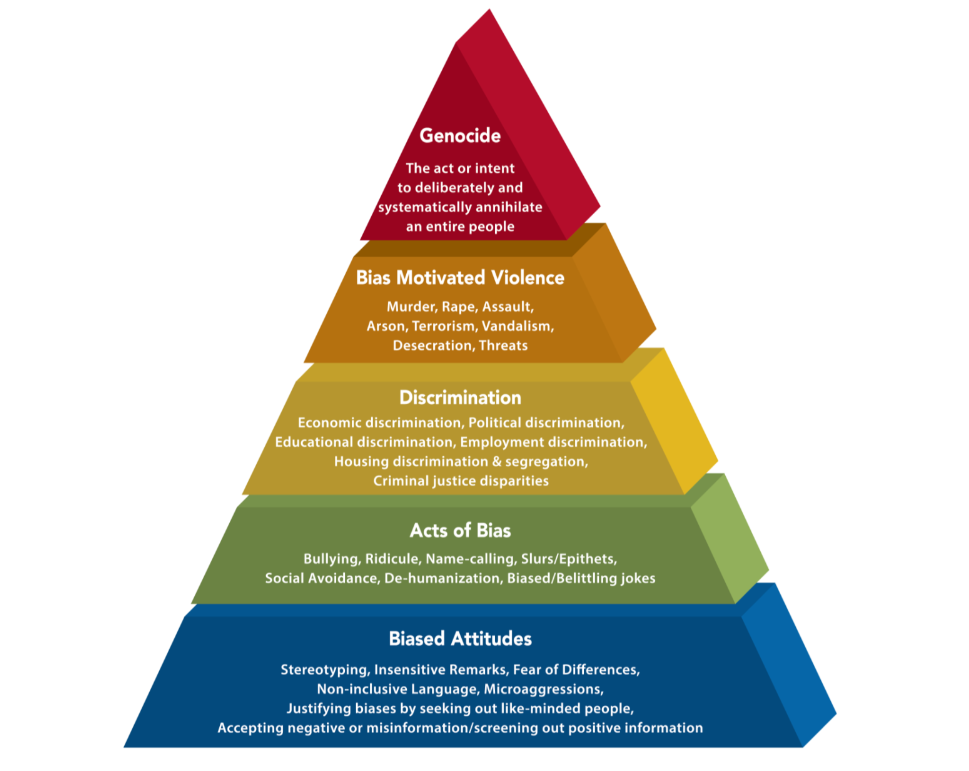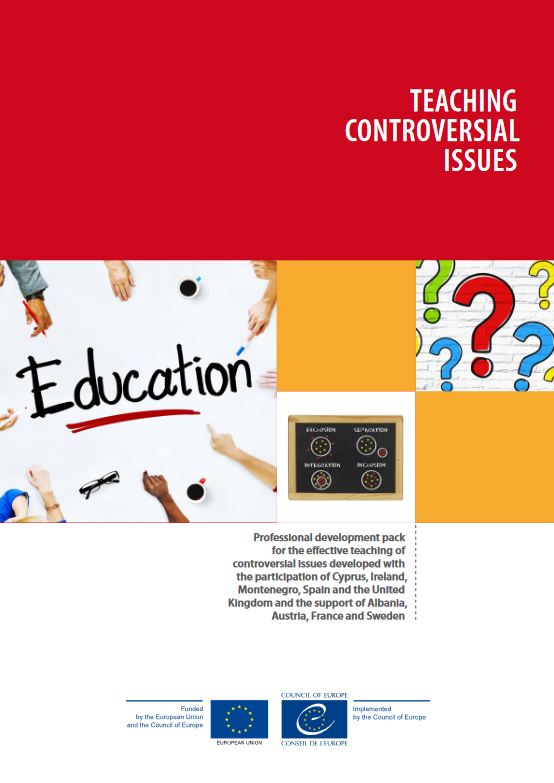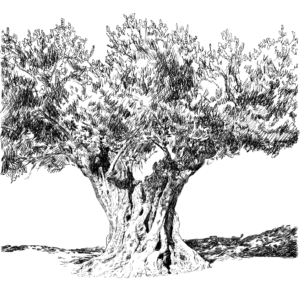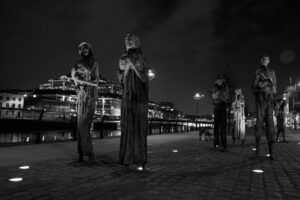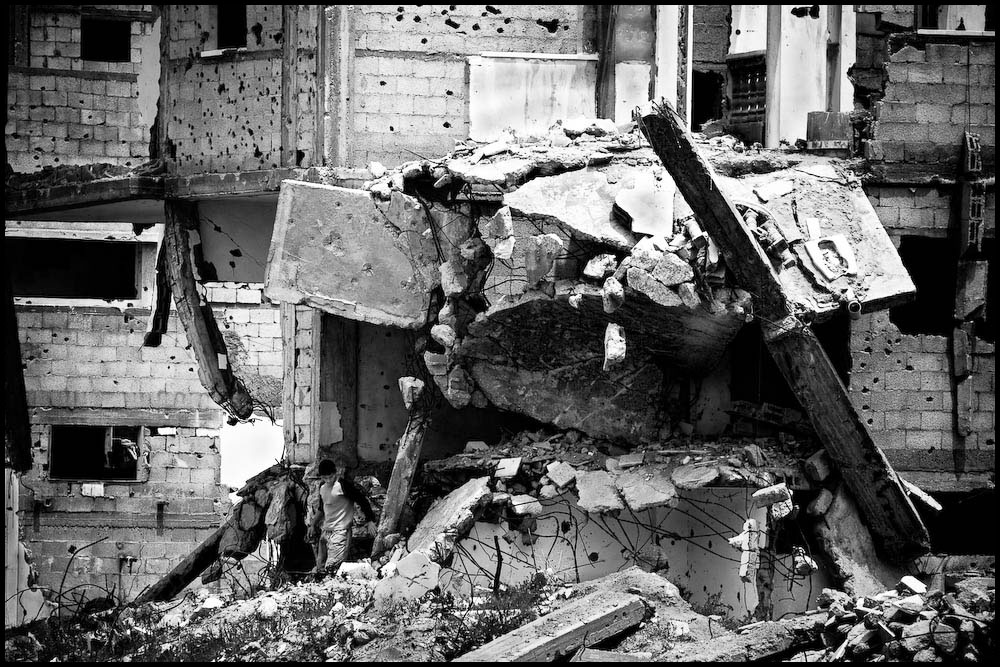
Inside the Gaza strip following bomb attacks by Israeli defence forces (IDF) in the cities of Rafah and Khan Yunis. Photo by Zoriah (14 May 2006), via Flickr CC-BY-NC)
In the shadow of the most traumatic attack on Jewish people since the Holocaust and what Palestinian people are referring to as a ‘second Nakba’, Ciara Regan shares a three-point guide for educators and teachers looking to make sense of the latest and most extreme violence in the Israeli-Palestinian conflict.
“First, never will even the most impressive television footage properly capture the depth of fear and despair felt in the homes and hearts of Gazans who are yet again facing death, devastation and displacement. Thousands of parents today have no more answers to give to their young children when they are asked why their houses are shaking or breaking under the weight and relentless force of the bombardments.
Second, we must be careful about the endless enumeration of casualty numbers. The dead and injured in Gaza are not anonymous. Behind the figures lie multiple individual destinies now torn apart. Too often in their lives have Gazan civilians been denied their dignity. Anonymity in death or injury is the ultimate denial. It is also too comfortable for the world and the parties engaged in the hostilities. Palestinians are not statistics and we must never allow them to be treated as such. They are human beings like others in the world, with their identity and the same hopes and expectations for an improved future for their children”
Former United Nations Relief Works Agency for Palestinian Refugees in the Near East (UNRWA) Commissioner-General Pierre Krähenbühl
This significant reminder, again by former United Nations Relief Works Agency for Palestinian Refugees in the Near East (UNRWA) Commissioner-General Pierre Krähenbühl during a press briefing on July 14th 2014 regarding events in Gaza at the time, highlighted an important but all too often forgotten reality. Behind the statistics and the propaganda, the claims and counter claims, the talk of ‘terrorists, self-defense and security’ are the lives (and now the continuing deaths) of Palestinians (overwhelmingly) and Israelis.
Seven years ago, developmenteducation.ie published a guide on the then situation in 2014. AGAIN, we republished and updated in 2021 as conflict was raging daily; deaths and injuries overwhelmingly continued to rise and AGAIN, the international community continued to talk and prevaricate while much of the world continued to look away.
2023 and we are here. Again.
The horrific rocket attacks and killing spree by Hamas, a designated terrorist organisation by the European Union and the US, of over 1,400 people on neighbouring villagers and civilians outside of Gaza, on young people at a music festival and violent abductions of around 229 civilians and soldiers is a shocking moment that has been described as the worst massacre of Jewish people since the Holocaust.
The Israeli Defence Forces’ response to the October 7th attacks has been to initiate a ‘total’ siege of Gaza, dropping 6,000 bombs in the first six days, with Israeli Prime Minister Benjamin Netanyahu warning its 2.3 million residents to ‘leave now’. The latest report on casualties killed in Gaza include at least 8,525 people, which includes 3,542 children, 2,136 women and 29 journalists with a blockade on access to water, food, medicine and fuel supplies. 15 hospitals are currently out of service.
Daily, since the 7th of October, conversations are being had about how this can be happening. Again. As we watch the footage, closer than it ever has been because of social media, I find myself struggling with the concept of human rights law and international law frameworks and asking myself (again!), what is the point? If these instruments and mechanisms do not exist to protect those when they need them most, then their very foundation is being eroded.
A key tenet of human rights is that they are universal; we all have rights because we are all human beings. The United Nations Declaration of Human Rights was born out of the very concept of Never Again. Never again will we allow such atrocities as that of the Holocaust to occur again.
History gives us the privilege of looking back and wondering why there were no interventions, why they weren’t stopped. We are witnessing that very history right now. Again. Despite the cries of Never Again.
We must ensure that never again means exactly that.
We must amplify the voices of all the victims of this violence as well as those of human rights defenders in both Palestine and Israel. We must say their names and ensure the realisation of their destinies. We must ensure the freedom of Palestine or what little is left, will be gone.
We must think about the world we are going to live in tomorrow. We must do what we can with the knowledge and educational tools we have.
We must say, not in my name.
1. Seek to understand
1. During a time of escalating hate, whether through words or actions, understanding where this can lead and how hate is nourished, practiced and conditioned is vital if it is to be challenged.
The number of active hate groups in the USA documented by the Southern Poverty Law Centre through their online hate map, for example, tracked 1,225 groups actively supporting hate against minority groups based on identity, racial profile, religion, including antisemitism in 2022.
Thinking about tackling hate involves looking at and thinking about de-escalating actions. Consider the Anti-Defamation League’s (ADL) education tool in this context, the Pyramid of Hate.
Where is the current conflict heading? What kind of language and terms are used by spokespersons in Israel and Palestine to describe what is happening? What can be done to de-escalate the situation?
2. Why do hundreds of human rights defenders, civil society organisations and solidarity groups continue to call for a boycott of Israeli goods and services?
Criticism of state policy and actions are legitimate activities in supporting civic spaces to hold people accountable. What are the responses from Israeli officials, military figures and supporters to these actions? Explore the key talking points and voices on the debate.
3. Explore an historian’s perspective on the use of the Holocaust by politicians in Israel and the implications of ‘Israeli mass violence against Palestinians’, by Raz Segal on 24 October 2023 in The Guardian (UK)
For further reading/resources:
- The history: Al Jazeera’s ‘What is the Israel-Palestine conflict all about?’ is listed as a simple guide, however, it is a very comprehensive timeline with maps and graphics outlining the collective history.
- Everything you need to know about Israel and Palestine explainer from Vox, including their brief history video below.
- The Human Right’s Perspective: ‘I am constantly amazed by man’s inhumanity to man’ – An acessible and comprehensive blog written by Omar Grech outlining the human rights context, published on developmenteducation.ie.
- B’Tselem, the Israeli Information Centre for Human Rights in the Occupied Territories have a comprehensive and interactive Map Section, created with independent research agency Forensic Architecture.
- Stay informed! Rather than focusing only on Western media, use Al Jazeera, Haaretz updates etc (which come with a content warning, as with these updates come with distressing images).
- Use our resources library for resources on Palestine, Israel and peace, such as the ones below.
Palestine & Israel: How Will There be a Just Peace? by CDVEC Curriculum Development Unit and Sadaka is an important development in helping post-primary students throughout the island of Ireland to explore the Palestinian & Israeli situation within the context of Human Rights and International Law.
The resource addresses key issues underlying the origins of the conflict and current obstacles to bringing about a just peace.
Beyond Boarders was written by the Galway One World Centre in the context of a profound humanitarian crisis. In June 2018, the UN Refugee Agency released figures showing an increase of 2.9 million people who had been forced to flee their country to find safety.
This resource aims to provide a range of creative and active learning methodologies for teachers wishing to explore the issue of migration and includes a section on separation walls and boarders, which is helpful in this current context.
Key Word Glossary
Antisemitism: hostility or prejudice against Jewish people, that leads to exclusionary, discriminatory, and violent actions targeting Jews and those perceived as Jewish.
Apartheid: Segregation on grounds other than race. A policy or system of segregation or discrimination on the grounds of race.
De-humanisation: When one group denies the humanity of another group, to make them appear to be sub-human. To remove their value as human beings, for example referring to people as ‘rats’, ‘cockroaches’ or ‘human animals’.
Genocide: An act committed with intent to destroy, in whole or in part, a national, ethnic, racial, or religious group. Coined in 1944 by a Polish-Jewish lawyer, it was created to define the crime of mass murder of groups of people more clearly and raise awareness about it (source: The Weiner Holocaust Library).
Islamophobia: refers to the fear of and hostility toward Muslims and Islam that is driven by racism and that leads to exclusionary, discriminatory, and violent actions targeting Muslims and those perceived as Muslim.
Nakba: Arabic for “catastrophe.” For Palestinians, nakba refers to “the expulsion and dispossession of hundreds of thousands Palestinians from their homes and land in 1948.”
Occupation: A situation in which an army or group of people moves in and takes over control of a place. In this context, occupation refers to the action, state or period of occupying or being occupied by military force.
Oppression: Prolonged cruel or unjust treatment or exercise of authority.
Polarisation: Division into two sharply contrasting groups, opinions or beliefs. Often, with polarised opinions or beliefs, there is very little room for compromise or discussion.
Siege: a military operation in which enemy forces surround a town or building, cutting off essential supplies, with the aim of compelling those inside to surrender.
2. We must be mindful of the weight we put on young shoulders
In real time, yet again, we are watching, reading, listening to and consuming media and information through our TVs and smart devices documenting the real life horrors of what is currently happening in Gaza. It is inevitable that young people are going to encounter images or content in relation to the conflict. It is important to equip them with the tools they need to process what they are seeing and hearing, in a suitable, age-appropriate manner. Below are some suggested resources and tips:
Tips for managing controversial issues
Ensure all perspectives are included. This doesn’t necessarily mean treating all perspectives equally as some may need more exploration than others, depending on perspectives of those involved and how factual the information being discussed is. It may be worth considering who’s voices are missing? Or are there any voices that are stronger than others?
Consider alternative viewpoints. Encourage the exploration of a range of perspectives to encourage more critical thinking and, hopefully, then being more open to hearing perspectives which differ from your own.
It is ok to not know. Students need to know that sometimes there is no ‘answer’ to certain issues, arguements or debates and that’s ok. The role of an educator is to facilitate these conversations to the best of your ability, challenge assumptions and misinformation. It is ok to not have an answer or to feel uncomfortable in these situations, but can be vital to give students a safe space to have these difficult conversations.
See also, Teaching Controversial Issues from the Council of Europe, below.
There's so much happening in the world and it might be affecting your child's mental health.
— Save the Children UK (@savechildrenuk) October 10, 2023
If you're unsure about how to support them, you’re not alone.
Here are some expert tips on how to talk to children about conflict ?#WorldMentalHealthDay #Israel #Gaza pic.twitter.com/UhqiZdCeqa
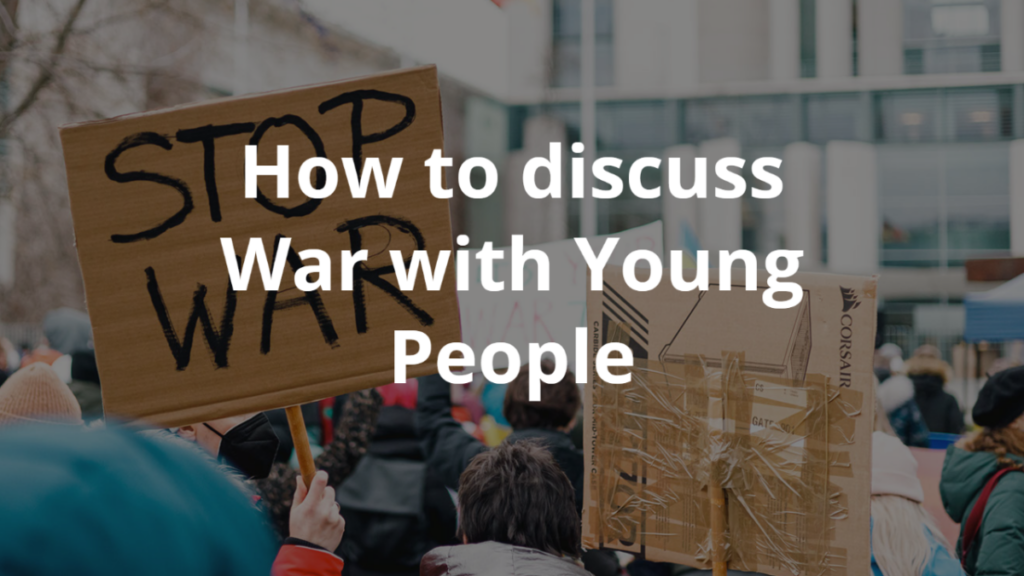
From developmenteducation.ie consortium partner, the National Youth Council of Ireland, we have How to Discuss War with Young People. While this has been compiled in the context of Ukraine and Russian, this guide takes a generally useful and mindful approach to the topic. It’s aim is to equip youth workers with the tools they need to acknowledge what is happening with young people and provide a safe space for discussion.
NYCI have also included activities to assist in the unpacking of issues of conflict and peace, further resources that may be of help and actions that can be taken.

This Teaching Controversial Issues training pack produced by the Council of Europe is a professional development programme for teachers which is designed to support and promote the effective teaching of controversial issues in schools across Europe. Learning how to engage in dialogue with people who’s values are different from ones own and to respect them is central to the democratic process and essential for the protection and strengthening of democracy and fostering a culture of human rights.
NPR (based in the US) have created a helpful, accessible guide about how to talk to children about the violence in Israel and Gaza and other news events that involve death and violence.
3. And most important of all, we MUST take action!
We must tackle hate in all its forms. We must not allow antisemitism to thrive in this context. We must not allow Islamophobia to thrive in this context.
We must advocate for peace education. Everyone deserves human rights.
Explore the language being used and look to challenge words and phrases that strip away people’s dignity and which treats them as objects or ‘the enemy’. Look beyond the statistics. The rhetoric displayed by Israeli officials over the past three weeks shows dehumanisation at work. Israeli defence minister Yoav Gallant in announcing the complete siege of Gaza asserted that:
‘We are fighting human animals.’
His words were echoed by Israeli Major General Ghassan Alian who said to Palestinians in Gaza that ‘human animals must be treated as such’.
Scholars have shown in the past how this sort of dehumanising rhetoric often precedes acts of genocide.
We must not allow them to be seen as such. There are numerous videos on social media of teachers and parents allowing their children some reprieve from the horrors surrounding them, to do some colouring in, to play together, to sing songs. What are the key issues effecting young Palestinians? There is a video of a young man who is a barber who is cutting people’s hair to give them some sense of dignity and to maintain their humanity and because he does not know what else to do. It is an acknowledgement of lives that existed and must be allowed to continue to do so, must not be forgotten or erased.
Challenge hate speech. Challenge antisemitism. Challenge Islamophobia.
Share and amplify voices from Palestine and Israel. This may feel futile, or like it is not enough of a response, but this is a direct request of Palestinian people. Explore the social media accounts of human rights-based organisations and defenders on the ground:
- in Israel, such as B’Tselem (Twitter/X, Instagram), the Association for Civil Rights Israel (ACRI) (Twitter/X, Instagram), the Public Committee against Torture in Israel (PCATI) (Twitter/X) and Breaking the Silence (Twitter/X, Instagram and YouTube)
- in the occupied Palestinian Territories, such as Bisan Center for Research and Development (Twitter/X, Facebook), Al Haq (Twitter/X, Facebook) and the Palestinian Center for Human Rights (PCHR) (Twitter/X, Facebook).
Attend Solidarity Rallies. There are many all over Ireland and the world. If you cannot make it in person, perhaps you can join virtually through Roblox, as others have been doing. We must say, not in our name!
Sign petitions. There are numerous circulating through social media, such as Ceasefire Now, Trocaire’s Demand for protection for civilians in Gaza, and Amnesty International’s Demand for Ceasefire.
Explore the text of the 6-page Control of Economic Activities (Occupied Territories) Bill 2018, which was approved by the Irish senate (Seanad Éireann) and would apply to territories where there is a clear international legal consensus on the status of an occupation. Look at Trócaire’s short FAQ guide to the Bill and its recent introduction into Dáil Éireann in March 2023. (The government has subsequently ‘paused’ the bill for further consideration).
Write to your TD. If you unsure how to do this, SpunOut have written this handy guide! If you are unsure what to say, you can simply ask them what they are doing in relation to the conflict and tell them what you would like them to do.
Explore the concept of boycott movements, why they are an important tool for human rights and international solidarity in practice and reflect on whether they work. Are you convinced?
- Curriculum integration: As a general introduction this feature can be adapted and used in a variety of teaching and learning contexts including CSPE, Politics and Society, Geography, History, Media Studies, Religious Education and English.

